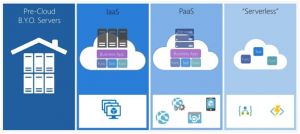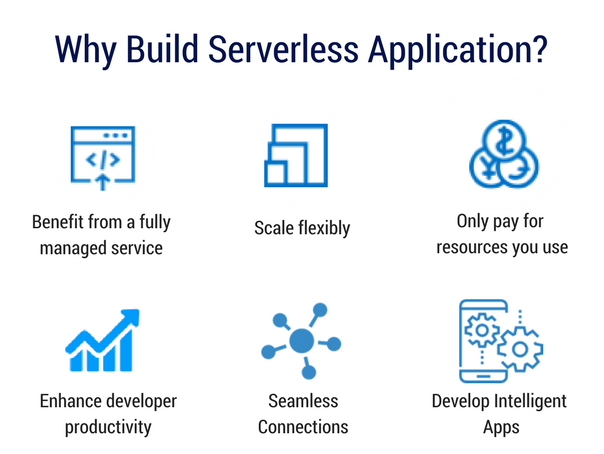What is Server-less Computing?
Server-less computing is a process for supplying backend services on an as-used basis. A server-less provider lets users write and deploy code regardless of the underlying infrastructure. A company that obtains backend services from a vendor without a server is billed according to its calculation and does not have to book and pay a fixed amount of bandwidth or number of servers. In the early days of the web, anyone who wanted to build a web application had to own the physical hardware required to run a server which is a burdensome and costly effort.
Then came cloud computing, where a set number of servers or an amount of server space could be leased remotely. Developers and businesses that rent these fixed units of server space in general on-purchase to ensure a surge in traffic or activity will not exceed their monthly limits and break their applications. It means that a large portion of the paid server space can be wasted. Cloud providers have introduced automatic scaling models to solve the problem, but even with automatic scaling of a spike in unwanted activity peak, like a DDoS attack, could end up being very expensive. Server-less computing enables developers to buy backend services on a flexible basis, that is, developers only have to pay for the services they use. It’s like switchover from a mobile phone data plan with a monthly fixed limit, to a plan that only charges for every byte of data that is actually being used. The term server-less is a bit misleading, because there are still servers that provide these background services, but all server space and infrastructure issues are dealt with by the vendor.
Server-less means that developers are able to do their jobs without worrying about the servers.


What makes Server Less Computing Different?
There are many cloud services that share attributes with IT without servers, including:
- BaaS – It refers to Back end as a service which enables developers to outsource back-end functionality
- PaaS- It refers to Platform as a service which enables you to develop or deploy product
- IaaS- It refers to Infrastructure as a service which allows you to do everything involving a website or app within the cloud environment.
What are back-end services? What’s the difference between front-end and back-end?
Application development is usually divided into two domains: front-end and back-end. The front end is the part of the application that users see and interact with, such as the visual layout. The back-end is the component the user does not see; this includes the server where the files in the applications file live and the database where user data and management logic are maintained.

The front-end of a website or app involves the bits that consumers see, interact with, and recall. Graphs, text and other visual cues can be found here.
The back-end of a website or application includes parts that users do not see, but they need those parts for a smooth website experience. These may include the following:-
- Data files- Inventories of available products, store locations open, and blog ticket lists all need a house in the backend.
- Processing- Everything a consumer does requires a little bit of power, and most of the crumbling data happens on the backend.
- Security- A user may need to log in to view certain pieces. The login page is on the front, but the function takes place behind the back.
In the server-free model, these types of backend functions are disparate When a user does something to trigger the code, the IT service provider without a server intervenes, allocates space and allows a smooth transition. pieces of code that remain inactive until users need it.
The Server-less Model has 4 Attributes –
- Variable in price- Vendors only charge you for the things you use.
- Self-Maintaining- Customers are not required to perform server maintenance.
- Scalable- They continually increase and decrease without the assistance of client programs.
- Reliable- These products are highly available and built with in fault tolerance.
What type of back-end services does server-less computing provide?
Most server-less vendors provide database and storage services to their clients, and many also have Function-as- a-Service (FaaS) platforms, such as Cloud flare workers. FAAs enables developers to run small bits of code at the periphery of the network. With FaaS, developers can build a modular architecture, making a code base more scalable without having to dedicate resources to the maintenance of the underlying backend.
What are the advantages of server-less computing?
- Lower Costs- Server-less computing is generally highly profitable, as traditional backend service providers typically resulting in the user paying for unused space or idle CPU time.
- Simplified scalability- Developers using a serverless architecture need not to worry about policies to increase their code. The server-less vendor is responsible for all scaling on request.
Simplified backend code- With FaaS, developers can create simple features that independently execute a single objective, like making an API call. - Quicker Turnaround- The server-free architecture can drastically reduce marketing time. Rather than having to go through a complicated deployment process to deploy bug fixes and new features, developers can add and modify code on a piecemeal basis.
- Server handling is not Required- Though ‘server-less’ computing does take place on servers, developers never have to contend with servers. These contracts are managed by the vendors. This can reduce the investment needed in DevOps, which reduces costs, and also allows developers to create and extend their applications without being constrained by server capacity.
- Server-free Architecture is Inherently Scalable- Applications built with a serverless infrastructure automatically adapt to the growth of the user base expands or utilization increases. If a function is to be executed in multiple instances, the vendor’s servers will boot, run, and terminate as required, often using containers.
- Quick Updates are Possible- Using an infrastructure without a server, it is not necessary to download code on the servers or to do a backend configuration in order to publish a functional version of an application. Developers are able to download bits of code very quickly and publish a new product. They can download code either at once or one feature at a time, because the application is not a single monolithic stack.

